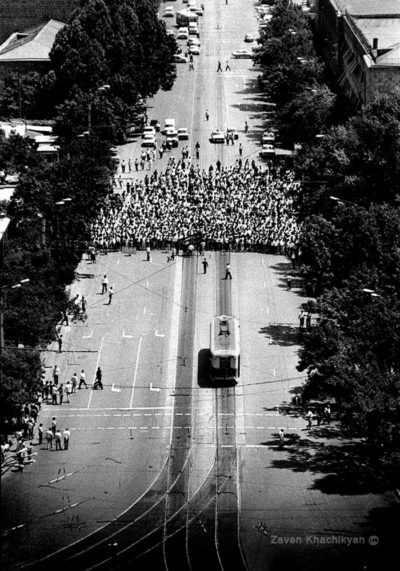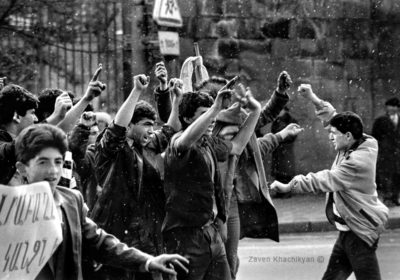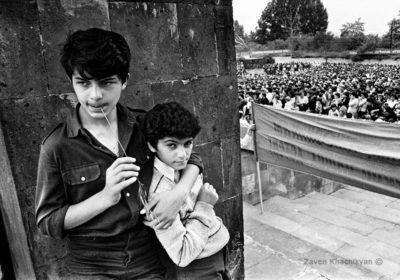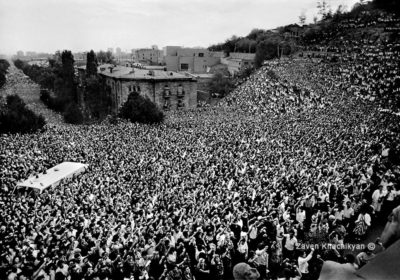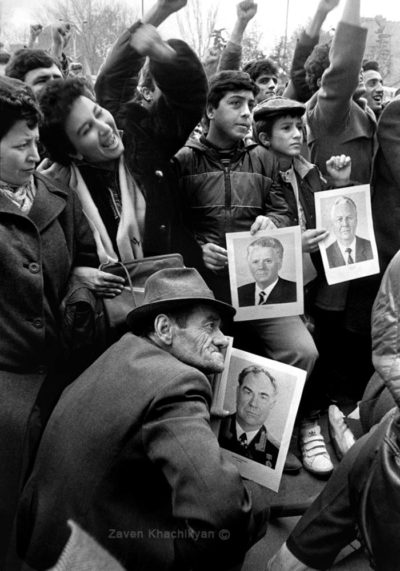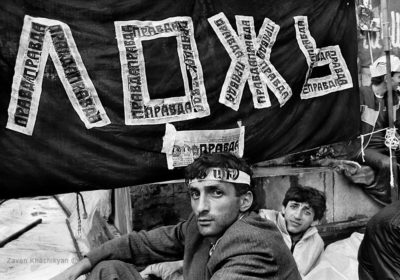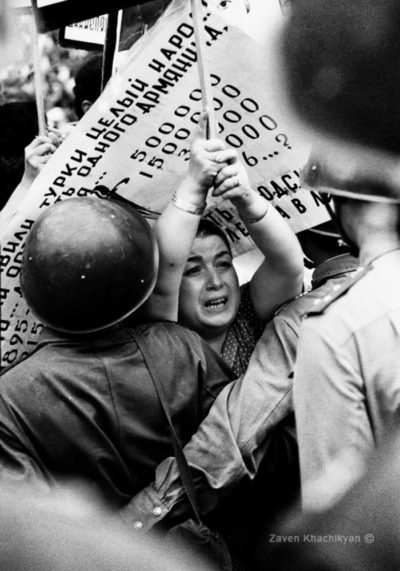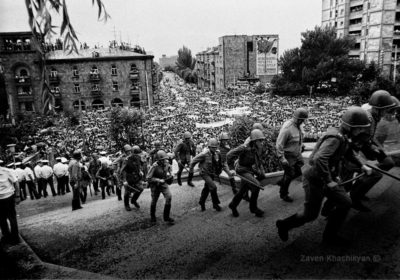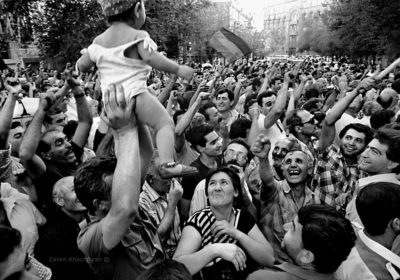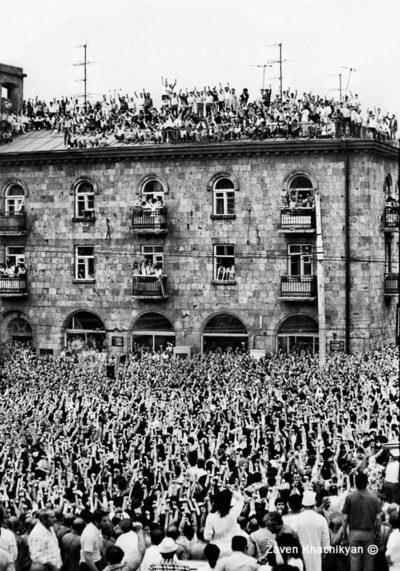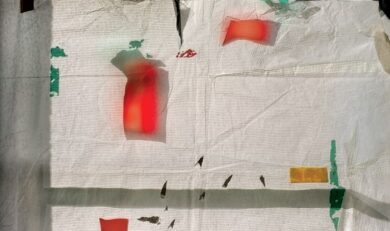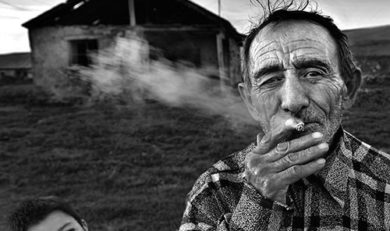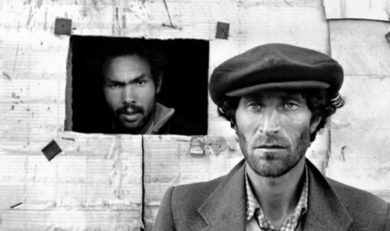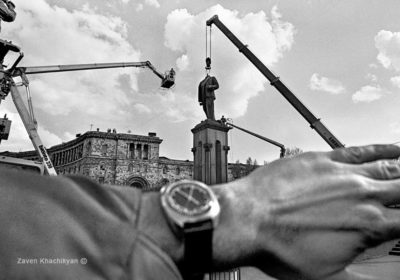
Transition
It’s an absurdity to think that it’s possible to interfere with the course of history . . . no need to get anxious about it. – Joan Miró
1987-1991: Following the announcement of “Perestroika” in the Soviet Union, rallies of hundreds of thousands of people were held in different towns of Armenia. Something powerful was taking place in the country. It was impossible not to take note of it, and it was impossible not to make one’s way to the square – demonstrations, hunger-strikes, posters, and student sitins. Placards about the Armenian Genocide in Russian, Soviet troops on guard, a new session in the Armenian Parliament, self preservation, the Nagorno-Karabakh issue . . . What did we really want? What were we demanding from ourselves in that mise en scène “decorated” or populated with Soviet troops?
The political ideological polygon was expanded; what was happening to us had another title, and what was still to happen had a yet different one. If we are to make an assessment of the past and the present, we must accept that everything was within bounds of what was allowed. And the clue to understanding the motive of the actors on the other side of “Perestroika” in Moscow, this can be found by analyzing our regional status.
The big unknowns were known to them, and the problems with small unknowns were and have been hitherto left to us Armenians. The globalization had started, at least for me. At times the sacrament of silence enclosed in photographs has made me step back and try to understand what is happening to us, where we are going, where we are headed as a society . . .

